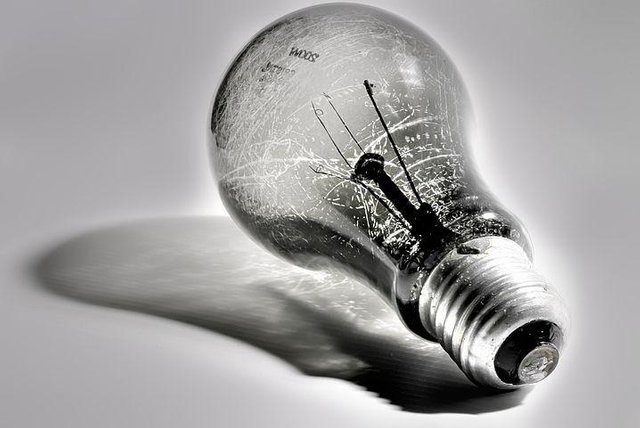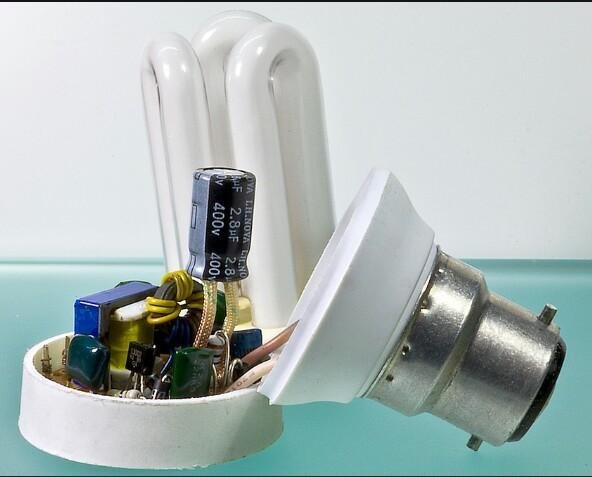ELECTRIC LAMP: THE SLAYER OF ATMOSPHERIC DARKNESS
Some inventions came like a shock to the world. Among some of these great inventions are the invention of dynamite by Alfred Nobel, the invention of Telephone by Alexander Graham Bell, the invention of Camera by Kodak and many others. The invention of the first commercially realizable Electric Lamp (using carbon filaments) by Thomas Alva Edison in 1879 is also not as exception.
ELECTRIC LAMPS.
These are devices that produce visible light from recombination of charges (electric current).The different methods of producing light by electricity may, in a broad sense, be divided in three groups, viz:
1. INCANDESCENT LAMPS:
The incandescent lamps produce light because of the passage of current through its filament which is heated to its incandescence. The higher the temperature, the higher will be the portion of radiation falling within the visible region of the spectrum.
Examples of this include the General Lighting Service Lamps (GLS Lamps) and Tungsten halogen lamps.
- GLS LAMPS
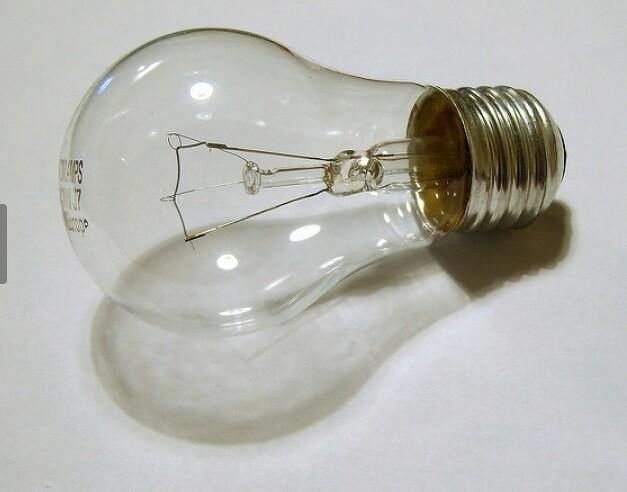
Source: flickr
The coiled arrangement reduces filament cooling and increases the light output by allowing the filament to operate at a higher temperature. The light output covers the visible spectrum giving a warm white to yellow light with a color rendering quality classified as fairly good.
- TUNGSTEN HALOGEN LAMPS
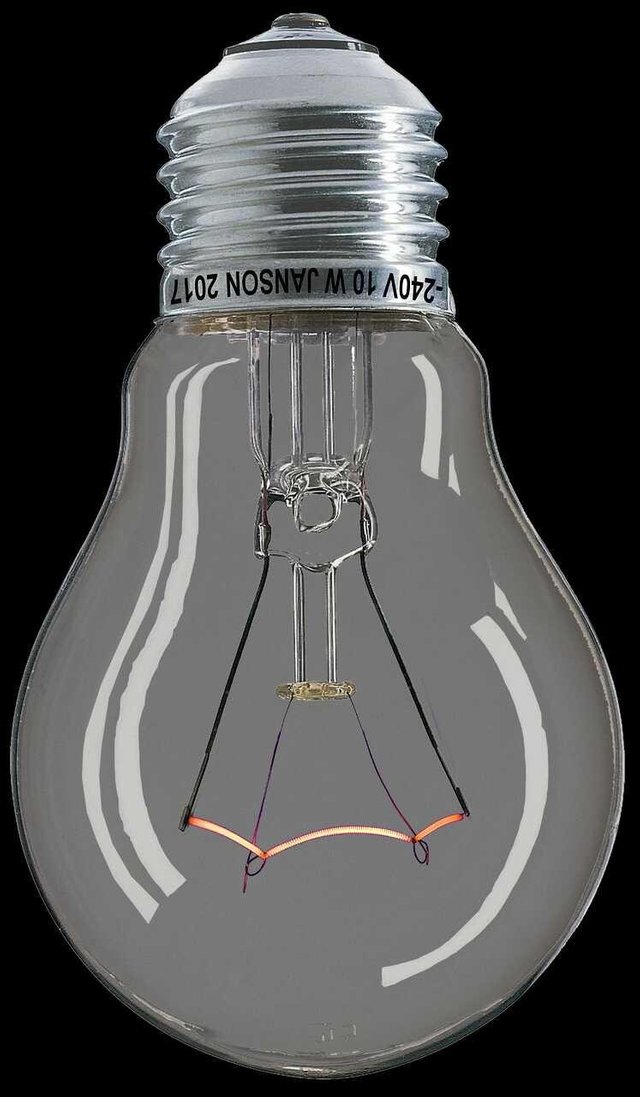
Source: Pixabay
These type of lamps has bromide or iodide added to the gas filling. This recycles tungsten and enables the filament to operate at a higher temperature for a given hours rating, and hence at a higher efficiency.
Tungsten lamps have the ability to withstand a high operating temperature without undue vaporization of the filament. The melting temperature of tungsten is about 3655°K, and is used in almost all modern incandescent lamps because of it possesses practically the following features:
A high melting point and hence operating temperature
A low vapor pressure
A high specific resistance and a low temperature coefficient
Ductility
Sufficient mechanical strength to withstand vibrations
2. DISCHARGE LAMPS
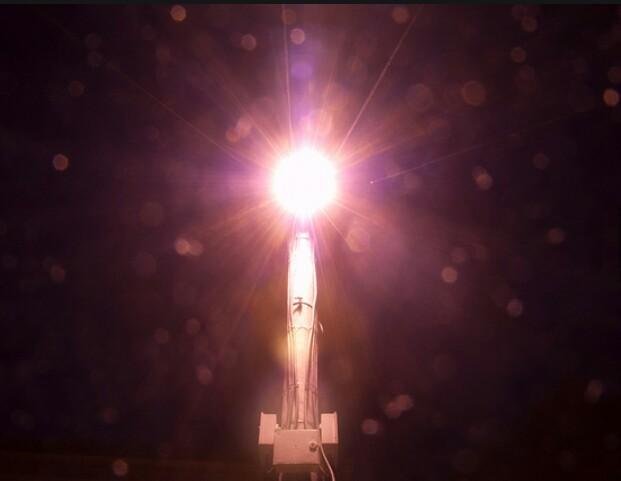
Source: flickr
Discharge lamps do not produce light by a means of incandescent filament but by the excitation of a gas or metallic vapor contained within a glass envelope. A voltage applied to two terminals or electrode to the end of a glass tube containing a gas or metallic vapor will excite the content and produce light directly. The can be summarized as follow:
- Low pressure sodium
- High pressure Sodium Lamp
- High Pressure mercury vapor lamp
- Metal Halide
- Mercury Blended
- LOW PRESSURE SODIUM LAMPS:
In this type of lamps, sodium metal is vaporized to a low pressure and produces monochromatic yellow light with a very high efficiency and have very long life. These lamps have visual acuity.
- HIGH PRESSURE SODIUM LAMPS:
These lamps operate with sodium vapor at high pressure and produce a golden yellow light with high efficiency and good color rendering. These have very long life and are used for public and industrial lighting.
- HIGH PRESSSURE MERCURY LAMPS:
These lamps operate with mercury vapor arc at very high pressure and have long life. The light from the arc is supplemented by light from phosphors activated by ultraviolet radiation. The lamps have a cool white light. These can be sued in factory and public lighting
-METAL HALIDE:
The lamps with their very high efficiency combined with their excellent color rendering and long life, can be used to industrial lighting and also for flood lighting. These are similar to high pressure mercury lamps, but contain metallic halides e.g., thallium, indium and sodium. This enables the lamps designer to tailor the spectral power distribution.
- MERCURY BLENDED LAMPS:
These lamps combine a high pressure mercury discharge tube with a tungsten filament, which acts as a ballast to the discharge tube and also increase emission at the red-end of the spectrum. These lamps have long life and are a direct replacement of incandescent lamps and can be used for industrial and public lighting.
3. FLOURESCENT LAMPS
Basically, a fluorescent lamp consists of a long glass tube internally coated with a suitable fluorescent powder. The tube contains a small amount of mercury along with the argon whose function is to facilitate the starting of the arc. These are two, sealed in electrodes at each of the tube. Two basic types of electrode are used in fluorescent lamps:
The coated-coil tungsten wire type: This type is used in standard pre-heat, rapid-start, instant-start lamps etc.
The inside-coated metal cylinder type which operates at a lower and a more even temperature than the tungsten type and is called “cold cathode”.
Circuits employed for the control of fluorescent lamps are: Switch start circuits and Starter-less circuits (starters can be glow type operated by voltage or thermal switch operated by current).
STROBOSCOPIC EFFECTS OF FLOURESCENT LAMPS
Stroboscopic or flickering effect produced by fluorescent lamps is due to the periodic fluctuations in the light output of the lamps caused by the cyclic variations of the current on AC circuits.
THANKS FOR TAKING YOUR TIME TO READ!!!
REFERENCES


